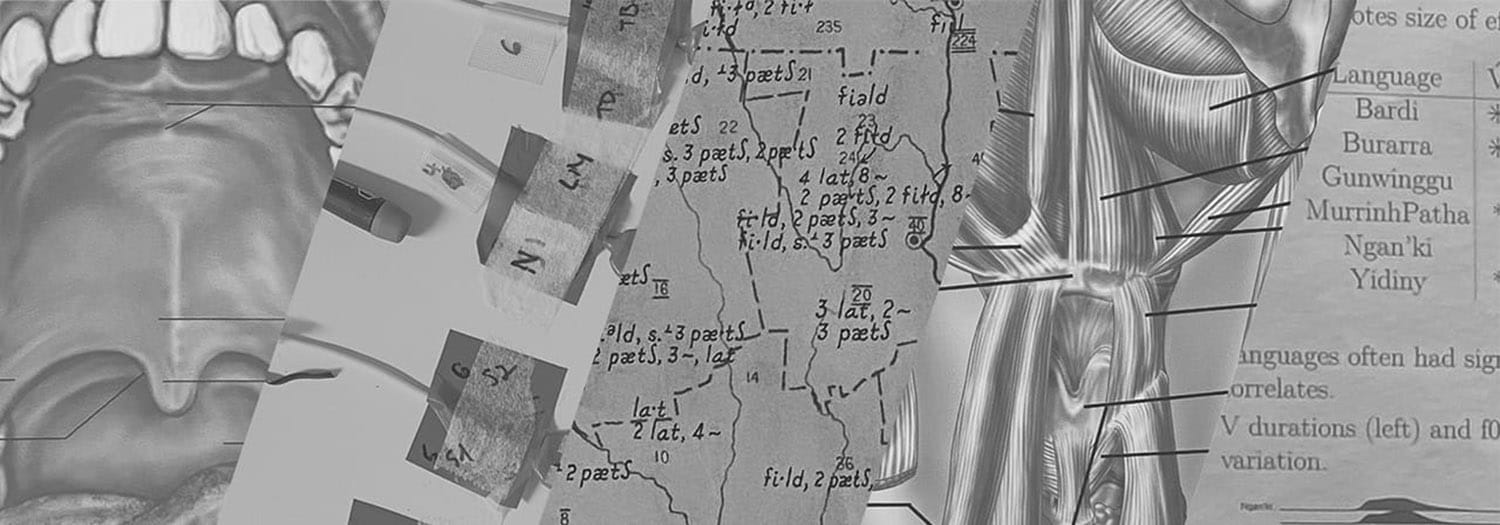Claire Bowern speaks at LILY Lab workshop
Professor Claire Bowern spoke at the Data Science Workshop on Computational Social Science, hosted by the Language, Information, and Learning at Yale (LILY) laboratory. In her talk, Using Bayesian methods to infer language spread, Claire discussed how she applies techniques from computational phylogenetics to her research on the Pama-Nyungan language family of Australia.
Historical linguistics is the study of how languages change over time. When speakers of a particular language live apart from one another, varieties of the language spoken in different communities change in different ways. These changes accumulate, and eventually, the differences between dialects become so great that their speakers can no longer understand one another. By comparing words and phrases in modern languages, scholars have determined that many of the world’s languages were once varieties of a single language, which gradually became distinct. In this way, languages can be grouped into language families, consisting of languages that descended from a common ancestor.
Claire’s scholarly work focuses on establishing such relationships for a group of languages known as the Pama-Nyungan languages, which are spoken by aboriginal communities in Australia. Historical linguists traditionally identify language families by comparing similar words in different languages and trying to find patterns in how these words differ. While this method, known as the comparative method, has been successfully used to study the Indo-European languages of Asia and Europe, it has proven to be less successful for studying the Pama-Nyungan languages.
Instead, Claire relies on more modern methods for discerning historical relationships between the Pama-Nyungan languages. Computational phylogenetics is a subfield of biology that uses statistical and computational techniques to study the evolutionary history of biological species. Because the problem of comparing modern species to find common ancestors is similar to the problem of comparing modern languages to find common ancestors, computational phylogenetic algorithms can be naturally extended to applications in historical linguistics. Using these techniques, Claire has been able to gain insights not only regarding which languages are related to one another, but also on where ancestor languages were once spoken, and roughly when descendent languages became distinct from one another.
Also present at the Workshop was graduate student Duncan Learmouth of Durham University, who is currently visiting Yale. Like Claire, Duncan also makes use of methods in computational phylogenetics. Whereas Claire studies relationships between languages, Duncan focuses on cultural relationships between different aboriginal societies of Australia. His hypothesis is that social and historical aspects of aboriginal Australian life are reflected in their culture. By applying computational phylogenetic techniques to rituals, mythology, music, and art, Duncan’s project aims to determine whether cultural clues might give us historical insights. For example, the geographic distribution of rock art motifs could indicate where societies lived and moved across Australia.
The Data Science Workshop on Computational Social Science was held on October 20. In addition to Claire and Duncan, speakers came from Microsoft Research, the University of Massachusetts Amherst, Brown University, and the Johns Hopkins University. LILY is a research group in Yale’s Department of Computer Science, led by Professor Dragomir Radev.


